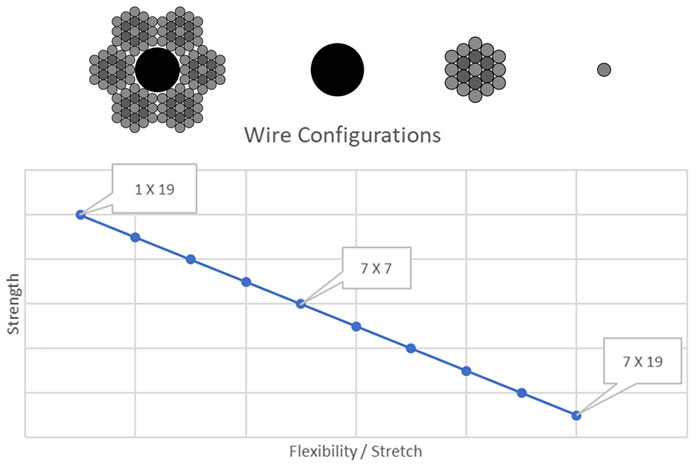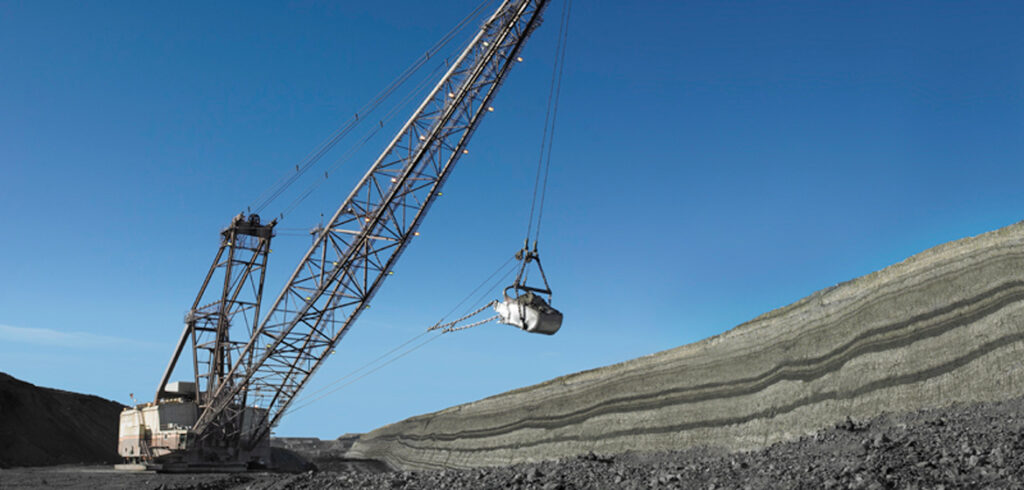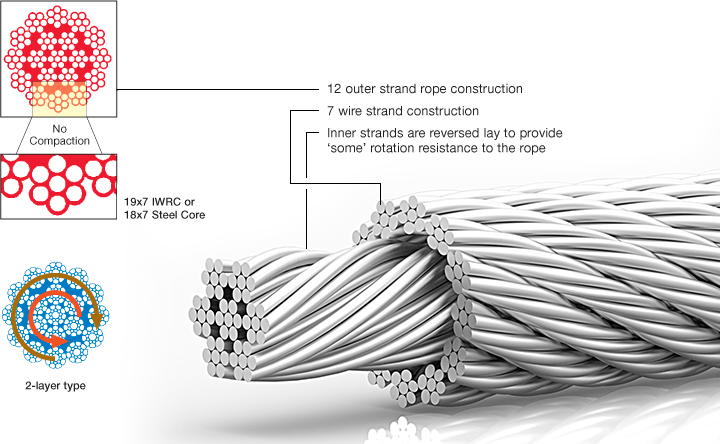Non-rotating steel wire ropes are used in high-stakes industries like construction, shipping, and logistics. Understanding their tensile strength and working load limit (WLL) is important for safety and efficiency. If you don’t know what these terms mean, this article will help you understand them and how they affect you. It will also help you make sure you’re using the right rope for the job and not putting yourself or others at risk.
The tensile strength of non-rotating steel wire rope, specifically the 35×7 construction, is 1960 N/mm². This means that the rope can handle a lot of force without breaking. This is important when you’re lifting heavy things. The working load limit (WLL) is the maximum weight you can lift safely. For example, a 10 mm diameter rope has a minimum breaking load of 7600 kg and a WLL of 1520 kg. A 20 mm diameter rope has a minimum breaking load of 30100 kg and a WLL of 6020 kg. These numbers are important to know so you can do your job safely. This is especially true when you need to make sure the load is stable.
Let’s look at what makes non-rotating steel wire ropes special, how they’re different from other ropes, and where you might use them in your work.
What Is Non-Rotating Steel Wire Rope?
Non-rotating steel wire rope, as the name implies, is designed to minimize rotation under load. Unlike standard wire ropes, it has a unique construction where the inner and outer strands are twisted in opposite directions. This counteracts the rotational forces, preventing the rope from twisting during lifting operations, making it ideal for applications requiring precise load handling.
Why Is Tensile Strength Important for Non-Rotating Steel Wire Rope?
Tensile strength is how much force the wire rope can take before it breaks. For non-rotating steel wire rope, tensile strength is important because it affects how much weight the rope can lift and how much extra weight it can handle before it breaks. This is important in industries like construction and marine where you’re lifting heavy things and you need to be stable to be safe. Non-rotating steel wire rope is 35×7 construction and has a tensile strength of 1960 N/mm², which is why it’s good for lifting heavy things.
What’s a Working Load Limit (WLL) and Why Should I Care?
The Working Load Limit (WLL) is the maximum load that a rope can safely carry. We calculate the WLL by taking the rope’s tensile strength and applying a safety factor to make sure it’s reliable. For example, a 10 mm diameter non-rotating rope has a minimum breaking load (MBL) of 7600 kg and a WLL of 1520 kg. In comparison, a 20 mm diameter rope has an MBL of 30100 kg and a WLL of 6020 kg. The WLL makes sure that loads are carried safely, reducing the risk of accidents, and it’s important for protecting both workers and equipment.
| Wire Diameter (mm) | Minimum Breaking Load (MBL) (kg) | Working Load Limit (WLL) (kg) |
| 10 | 7600 | 1520 |
| 11 | 9100 | 1820 |
| 12 | 10700 | 2140 |
| 13 | 12800 | 2560 |
| 14 | 14800 | 2960 |
| 16 | 19400 | 3880 |
| 18 | 24200 | 4840 |
| 20 | 30100 | 6020 |

What’s the Relationship Between Tensile Strength and Working Load Limit?
Tensile strength and WLL are related but different. Tensile strength tells you how much force a rope can take before it breaks. WLL tells you how much force a rope can take and still be safe to use, usually a fraction of the tensile strength. Knowing both helps you choose the right rope to lift a load safely and efficiently.
How Do You Know the Working Load Limit?
We test the hell out of it. We load the wire rope until it breaks. That tells us how much it can take. Certifications like ISO and OSHA mean the rope has been tested and meets safety standards. Make sure you get the right certifications when you buy so you know you’re safe.
What Is a Non-Rotating Wire Rope?
A non-rotating wire rope is made with layers of wire strands laid in opposite directions. This design effectively fights against the rotational forces that usually happen during lifting, which makes it more stable and safe.
How Do You Know If a Wire Rope Is Non-Rotating?
Non-rotating wire ropes usually have between 11-13 outer strands and two layers of strands, which makes them really good at not rotating. If the rope has fewer strands, like 8-10, it still might be non-rotating, but it’s only medium at not rotating.
What Is Type 1 Rotation-Resistant Wire Rope?
Type 1 rotation-resistant rope has at least 15 outer strands and is made to keep torque and rotation to a minimum. It’s often used in applications where you need to keep it from rotating to lift safely.
What Kind of Wire Rope Is the Most Flexible?
The more strands a wire rope has, the more flexible it is. However, the most flexible wire ropes are those with a fiber core, although they are more susceptible to crushing. If flexibility is your main concern and crushing is not an issue, you should choose a wire rope with a fiber core.
What Industries Use Non-Rotating Steel Wire Rope?
Non-rotating steel wire rope is used in the following industries:
- Construction: For cranes and hoists that require load stability.
- Marine and Shipping: In winches where twisting could cause instability.
- Logistics and Warehousing: For precise lifting and moving of loads.
- Tower Cranes, Mobile Cranes, and Container Cranes: These ropes are particularly useful in operations that require stability.
They are particularly useful in applications that require precise load handling and safety.

How Do Non-Rotating Steel Wire Ropes Compare to Traditional Wire Ropes?
Compared to traditional wire ropes, non-rotating steel wire ropes offer greater stability and safety, particularly under load. Traditional ropes tend to twist, which can lead to dangerous situations during lifting operations. Non-rotating ropes mitigate this risk, though they might require more careful maintenance to ensure longevity.
What Safety Standards Should You Look for When Purchasing Non-Rotating Steel Wire Rope?
When purchasing non-rotating wire rope, look for certifications such as ISO 2408 and OSHA 1926.1414. These standards ensure that the rope has undergone rigorous testing and meets safety benchmarks essential for lifting operations.
How to Keep and Look at Non-Rotating Steel Wire Rope?
It’s important to maintain and inspect non-rotating steel wire rope to keep it safe:
- Lubrication: Regularly lubricate the rope to reduce wear between the strands.
- How often to inspect: Inspect the rope before each use for wear, corrosion, or damage.
- When to replace: Replace the rope if you see significant wear or broken wires, as they make the rope unsafe.
Summary
Knowing the tensile strength and working load limit of non-rotating steel wire ropes helps you lift things safely and effectively in tough environments. If you’re shopping for this equipment, knowing what to look for in certifications, testing, and maintenance will help you choose the right one for your needs.



